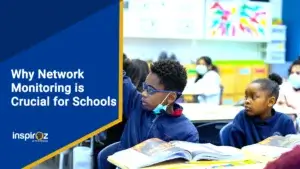A survey of parents with children in K-12 schools has revealed that schools are paying greater ransoms and enduring longer closures due to ransomware.
The latest data from Kaspersky reveals that a larger number of parents have encountered ransomware assaults on their children’s schools. 14 percent of American parents experienced ransomware attacks this year on K-12 schools that their child attended, an increment from the 9 percent reported last year.
The Ransomware Attacks on K-12 Schools report disclosed that the average ransom paid by schools to their attackers was $887,360 in 2021, whereas the average amount was only $375,311. The report also revealed several other insights relevant to parents’ experiences with these events.
The K-12 education sector has faced a significant increase in cyber-attacks, posing a serious threat to schools, teachers, students, and the entire education system. Cybercriminals are targeting educational institutions due to the vast amount of personal data they hold, the inherent vulnerabilities in their networks, and the potential financial gain from ransomware attacks.
The Alarming Increase in Cyber Attacks
According to a 2022 Mid-Year Report by Check Point, the education sector experienced a staggering 44% increase in cyber-attacks compared to the previous year. On average, there were 2,297 attacks against educational organizations every week. This surge in cyber attacks highlights the vulnerabilities within the K-12 education sector and the urgency to address them.
One of the reasons why educational institutions have become attractive targets for cyber criminals is the abundance of personal details they possess.
Academic institutions house a wealth of sensitive information, including student records, financial data, and social security numbers. This valuable data can be exploited by threat actors for various malicious purposes, such as identity theft or financial fraud.
Understanding the Factors Contributing to Vulnerability
Several factors contribute to the vulnerability of the K-12 education sector to cyber attacks. Unlike most companies that primarily have employees, academic institutions have a much larger network that includes not only teachers and staff but also students. This expansive network makes it more challenging to protect against potential threats and creates a larger attack surface.
Furthermore, educational institutions typically have limited resources allocated to cybersecurity. Unlike banks or corporations that have dedicated IT and security teams, schools often lack the necessary personnel and funding to implement robust security measures. This understaffing and lack of financial investment further amplify the vulnerabilities within the education sector.
The Impact of Ransomware Attacks
One of the most prevalent and damaging types of cyber attacks affecting the K-12 education sector is ransomware attacks. Ransomware is a malicious software that encrypts files and systems, rendering them inaccessible until a ransom is paid. Schools that fall victim to ransomware attacks are not only denied access to critical information but also face significant financial consequences.
In 2019, over 500 ransomware attacks targeting US public schools were reported.
The financial impact of these attacks can be substantial, with some schools paying thousands of dollars in ransom to regain access to their systems. The inability to access computer systems hinders day-to-day operations, including email communication, record-keeping, and resource allocation.
Moreover, the disruption caused by ransomware attacks can have far-reaching consequences. In some cases, schools have been forced to close temporarily, disrupting the education of students and causing significant inconvenience for teachers, parents, and the community. The case of Monroe-Woodbury school district in New York, which remained closed due to a cyber attack, serves as a stark reminder of the potential consequences of these attacks.
The Need for Enhanced Cybersecurity Measures
Given the alarming increase in cyber attacks and the significant impact they can have on the K-12 education sector, it is crucial for schools and educational institutions to prioritize cybersecurity measures. By adopting a prevent-first approach and integrating best practices, academic institutions can better protect themselves against cyber criminals.
One essential measure is network segmentation, which involves dividing the network into smaller, isolated segments. This approach limits the lateral movement of threats within the network, making it more difficult for hackers to gain unauthorized access to sensitive information.
Another effective security measure is the implementation of multi-factor authentication (MFA). MFA adds an extra layer of protection by requiring users to provide multiple forms of identification, such as a password and a unique verification code sent to their mobile device. This significantly reduces the risk of unauthorized access to accounts and systems.
Endpoint security is also critical in defending against cyber attacks. By utilizing advanced endpoint protection solutions, schools can detect and prevent malicious activities on devices connected to their network. These solutions employ machine learning algorithms to identify and block potential threats, providing real-time protection against malware, ransomware, and other cyber threats.
Furthermore, cybersecurity awareness and education play a vital role in protecting against cyber attacks. Students, teachers, and staff should receive training on recognizing and responding to phishing attempts, password security best practices, and other common cyber threats. By fostering a culture of cybersecurity awareness, educational institutions can empower their stakeholders to become the first line of defense against cyber attacks.
The Future of Cybersecurity in K-12 Education
As the threat landscape continues to evolve, it is essential for the K-12 education sector to remain vigilant and proactive in addressing cybersecurity challenges. The implementation of advanced technologies, such as artificial intelligence and machine learning, can empower schools to detect and respond to threats in real-time.
In conclusion, the increasing threat of cyber attacks in the K-12 education sector demands immediate action. Schools must prioritize cybersecurity measures to protect their sensitive data, maintain operational continuity, and safeguard the education of students. By implementing preventive measures, raising awareness, and collaborating with cybersecurity experts, educational institutions can mitigate the risks posed by cybercriminals and ensure a safe and secure learning environment for all.







